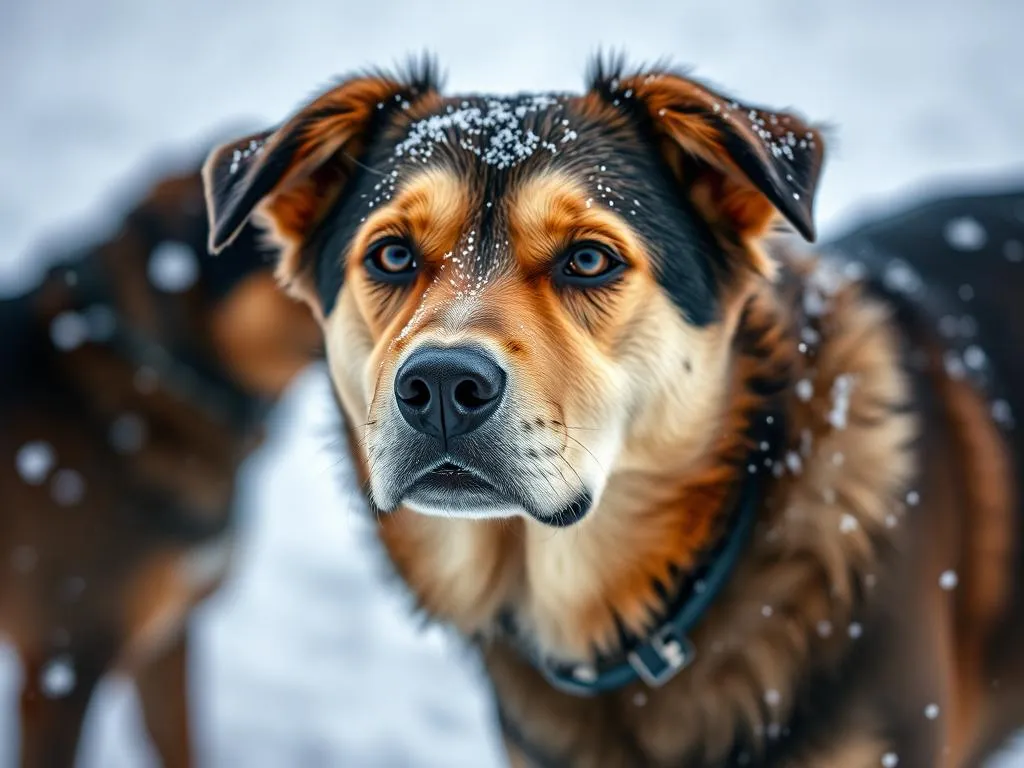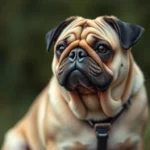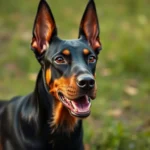
Introduction
Did you know that some dog breeds are specifically designed to thrive in cold, snowy environments? These breeds not only love the chill but actually require it to stay happy and healthy. Understanding which dog breeds who love cold weather snow can help potential dog owners select the right companion for their lifestyle, especially if they live in regions with harsh winters.
This article will explore various dog breeds that flourish in snowy climates, diving into their unique characteristics, adaptations, and care needs. We’ll also cover important safety tips for keeping these dogs comfortable during the winter months. By the end, you’ll have a comprehensive understanding of how to choose and care for a cold-weather-loving canine.
Understanding Cold Weather Adaptations in Dogs
Dogs that enjoy cold weather have evolved specific physiological adaptations over generations to help them thrive in icy temperatures.
Physiological Adaptations
- Thick Fur Coats: Many cold-loving breeds possess double coats. The outer layer is typically coarse and water-resistant, while the undercoat is soft and insulating, providing warmth during frigid weather.
- Body Fat and Muscle Mass: Breeds that excel in cold climates often have higher levels of body fat and muscle mass, which help retain heat and provide energy for physical activities in snow.
- Size and Shape Considerations: Generally, larger dog breeds with broader body types can retain heat better than smaller breeds. This is known as Bergmann’s Rule, where larger animals are found in colder climates.
Behavioral Adaptations
In addition to physical traits, behavioral adaptations also play a significant role:
– Activity Levels in Cold Weather: Many dogs that love snow are very active and energetic, often finding joy in outdoor play and activities when the temperatures drop.
– Preference for Outdoor Play in Snow: These breeds often enjoy snow-related activities such as running, playing fetch, and even sledding, showcasing their love for winter weather.
Top Dog Breeds That Love Cold Weather
Siberian Husky
- Origin and History: Originally bred by the Chukchi people in Siberia for pulling sleds, the Siberian Husky has a long history of snow-filled adventures.
- Temperament and Behavior: Known for their friendly and outgoing nature, Huskies are social creatures that thrive in active households.
- Physical Characteristics: They typically have a thick double coat, erect ears, and striking blue or multi-colored eyes.
- Ideal Climate Conditions: Huskies are happiest in cold weather, making them perfect companions for snowy environments.
Alaskan Malamute
- Origin and History: The Alaskan Malamute was developed as a sled dog for heavy hauling in the Arctic regions.
- Temperament and Behavior: These dogs are loyal, affectionate, and known for their strength and endurance.
- Physical Characteristics: Malamutes have a robust build, a thick coat, and a bushy tail, which helps them stay warm.
- Ideal Climate Conditions: They thrive in cold climates and require regular exercise in snow.
Bernese Mountain Dog
- Origin and History: Originating from the Swiss Alps, the Bernese Mountain Dog was bred for herding and draft work.
- Temperament and Behavior: Bernese are gentle, affectionate, and great with families, making them excellent companions.
- Physical Characteristics: They are large dogs with a beautiful tri-color coat and a strong, muscular build.
- Ideal Climate Conditions: Their thick fur makes them well-suited for snowy environments.
Saint Bernard
- Origin and History: Known for their rescue work in the Swiss Alps, Saint Bernards have a rich history of helping travelers in snowstorms.
- Temperament and Behavior: They are exceptionally gentle and friendly, often referred to as “gentle giants.”
- Physical Characteristics: These dogs possess a large size, a thick coat, and a distinctive appearance with a broad head.
- Ideal Climate Conditions: They thrive in cold weather and can comfortably navigate snowy landscapes.
Newfoundland
- Origin and History: Originally bred to assist fishermen in cold waters, Newfoundlands are known for their swimming prowess.
- Temperament and Behavior: They are known for their gentle and calm demeanor, making them excellent family pets.
- Physical Characteristics: They have a thick, water-resistant coat and webbed feet, ideal for snowy and wet conditions.
- Ideal Climate Conditions: Newfoundlands are well-equipped to handle cold weather and enjoy outdoor activities in the snow.
Akita
- Origin and History: The Akita breed hails from Japan and was originally used for hunting large game.
- Temperament and Behavior: Akitas are known for their loyalty and courage, often forming strong bonds with their families.
- Physical Characteristics: They have a thick, double coat that keeps them warm in cold weather, along with a noble and powerful appearance.
- Ideal Climate Conditions: These dogs thrive in colder climates and enjoy frolicking in the snow.
Samoyed
- Origin and History: The Samoyed breed was developed by the Samoyedic people in Siberia for herding reindeer and pulling sleds.
- Temperament and Behavior: Known for their friendly and playful nature, Samoyeds are social dogs that enjoy being a part of family activities.
- Physical Characteristics: They have a fluffy white coat that provides insulation against cold temperatures and a signature “Sammy smile.”
- Ideal Climate Conditions: Samoyeds love cold weather, making them perfect companions for snowy adventures.
Characteristics of Cold-Loving Dog Breeds
When it comes to dog breeds who love cold weather snow, certain characteristics set them apart.
Fur Types
- Double Coats vs. Single Coats: Most cold-weather breeds have double coats, which offer superior insulation compared to single-coat breeds. This design helps trap heat close to the body while providing protection against the elements.
- Insulating Properties and Waterproofing: The outer layer of fur often has water-resistant properties, preventing snow and moisture from soaking through to the skin.
Energy Levels
- High Endurance for Snow Activities: Breeds that thrive in cold weather typically have high energy levels, allowing them to engage in vigorous play and exercise even in harsh conditions.
- Playfulness in Cold Environments: Dogs that love snow often exhibit playful behavior, enjoying activities like chasing snowballs or running through drifts.
Health Considerations
- Cold Weather Durability: While these breeds are well-adapted to colder climates, they still require proper care and attention to thrive.
- Common Health Issues Related to Cold Breeds: Some cold-weather breeds may face specific health challenges, such as hip dysplasia or skin issues, so regular vet check-ups are essential.
Caring for Cold Weather Dogs
Caring for dogs that enjoy cold weather involves understanding their unique needs.
Grooming Needs
- Importance of Maintaining a Healthy Coat: Regular grooming is essential to prevent matting and ensure that their coats remain efficient at insulating against the cold.
- Seasonal Grooming Tips: During shedding season, more frequent brushing is needed to manage loose fur and maintain coat health.
Nutrition
- Dietary Needs to Support Energy Levels in Cold Weather: Dogs that burn more calories in cold environments may require a higher-calorie diet to maintain their energy levels.
- Recommended Foods and Supplements: Consult with a veterinarian to determine the best diet and consider supplements that support joint health, especially for larger breeds.
Exercise
- Best Practices for Exercising in Cold Weather: Keep exercise sessions shorter but more frequent to prevent overexertion. Pay attention to your dog’s comfort level in extreme cold.
- Outdoor Activities That Are Safe and Enjoyable: Snowshoeing, sledding, and playing fetch in the snow can be fun activities for both you and your dog.
Safety Tips for Cold Weather
Keeping your dog safe in cold weather is essential for their well-being.
Signs of Cold Weather Distress
- Hypothermia and Frostbite Symptoms: Watch for signs like shivering, lethargy, and excessive whining, as these can indicate that your dog is too cold. Frostbite can manifest as discoloration of the skin, particularly on ears and paws.
Protective Gear
- Dog Jackets, Boots, and Other Accessories: Depending on the dog’s breed and coat thickness, jackets and boots may be necessary for added protection against the cold and snow.
Indoor Care
- How to Keep Your Dog Warm and Comfortable Indoors: Ensure your home is adequately heated, and provide warm bedding away from drafts. If your dog spends time outdoors, limit exposure during extreme weather conditions.
Conclusion
In summary, the dog breeds who love cold weather snow have unique characteristics and adaptations that allow them to thrive in snowy environments. From the energetic Siberian Husky to the gentle giant Saint Bernard, each breed brings its own charm and suitability for cold climates.
When considering a dog as a companion in colder regions, it’s crucial to evaluate their care needs and ensure that you can provide a loving, supportive environment. Understanding these breeds better will help you make an informed decision that aligns with your lifestyle and climate.









